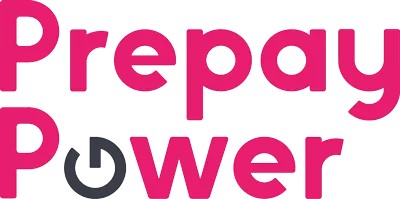
In 1987 the acronym VUCA (volatile, uncertain, complex, ambiguous) was coined by economics professors Warren Bennis and Burt Nanus to acknowledge the increasing unpredictability of the world.
35 years later, post-Brexit, post-pandemic, and post-Ukraine, the socioeconomic complexity, uncertainty and volatility have arguably reached levels not seen in a generation.
When all this is considered, it is no surprise to find that research from Mckinsey Consulting shows that workforce planning, strategy, and change is forecast to be the biggest area of HR spending, with 33% of respondents expecting to invest more in this area in the short to medium term.

It is a way of sizing your workforce, so it is ready to meet the current and future needs of your organisation. Given the current volatile environment, it’s also about developing an agile workforce that can flex and adapt quickly to changing circumstances.
CHRO boardroom engagement is essential for effective workforce planning. HR workforce planners must have a clear and up-to-the-minute understanding of business objectives. This can only be achieved through an intimate engagement with and contribution to the strategic business planning and goal-setting process, the output of which will determine the workforce plan.
Gap analyses sit at the heart of any business planning process and workforce planning is no different. This is a case of comparing your desired organisation chart of the future in terms of positions, headcount, and structure with the situation as it stands today. You should be able to quantify the gap in terms of additional headcount, new and retired positions, and new and retired organisations.
Most strategic planning processes use a PESTLE analysis and again workforce planning is no different. The CIPD even provides a blank PESTLE analysis template for strategic workforce planners and a completed PESTLE Analysis template so you can visualize the end product.
The PESTLE analysis provides a method of understanding the external business environment by assessing key external factors: Political, Economic, Sociological, Technological, Legal Environmental, which can impact an organisation. According to the CIPD, a PESTLE Analysis can, ‘help to identify disruptive changes to business models that may profoundly affect the future employment landscape. It can identify skills gaps, new job roles, job reductions, or displacements’ and can support ‘people professionals and senior managers in strategic decision-making
This PESTLE analysis can be supplemented with several other strategic planning techniques including SWOT Analysis, Porter’s Five Forces, Competitor Analysis and/or scenario planning.
INSERT-CTA
This gap analysis informs the workforce plan which itself starts with a straight-forward recruitment plan which outlines, positions and headcount, and a timeline. The entire process is repeated on an episodic basis, typically yearly, but if using cutting-edge workforce planning software (which we expand on later), a dynamic workforce plan can be created that is continuously updated with real-time data.
Of course, a workforce plan is not a crystal ball into the future and exists within a wide confidence interval and the organisation must be ready to react to a wide range of potential future scenarios.
Here are some of the techniques that are used to deal with the natural unpredictability of the external world and the natural lack of reliability of a workforce plan once established!

Succession planning is a key risk management element of any workforce plan. Classically this has involved the nurturing of a pool of high-potential replacements for managerial positions who are ready to jump in when people retire, resign or progress. Much of this staff attrition/progression will be forecasted but a lot of it will be unexpected and succession planning smooths over these bumps.
A good succession plan will maximise the retention of high performers and ensure key roles are filled quickly which will lead to a more stable and robust workforce plan.
Mckinsey’s research has shown that a small subset of roles, termed critical roles is disproportionately important to success at any time. In the post-pandemic recovery period, new product development and innovation might be crucial yet the Ukraine situation and decreasing confidence in globalisation might mean supply chain competency is a short and medium-term priority.
Workforce planning requires that organisations identify which roles are core to success in these time/situation critical areas, the ideal qualities of leaders, and whether these critical roles are optimised for success.

Talent shortages in the present or future may threaten the workforce plan and contingency plans must therefore be developed.
Such contingency measures could include an enhanced ability to upskill internal and external candidates to help fill areas where talent shortages are forecasted or emerge unexpectedly.
McKinsey argues that this contingency planning should extend beyond the classic role-based planning and should look at the major skill pools, (take, for example, digital coders).
By abandoning the usual focus on titles and traditional roles, employers can adopt a more expansive and dynamic view of their talent.
This overarching skill pool approach promotes a more flexible outlook which could help the organisation to better adapt to current and forecast critical role shortages through the strategic redeployment and/or upskilling of talent from the broader skill pool.
Even the best workforce planning system in the world cannot keep up with the complexity, volatility, and uncertainty of the modern world, and increasingly organisations are using contingency workers (temporary, part-timers, and contractors) to plug the gaps in the workforce plan.
Blue chips are now embracing the gig economy and using it to develop a contingency workforce through exclusive enterprise programs, (like Upwork Enterprise used by Microsoft and others), giving them access to an elite pool of readily available freelancers.

The HR Profession has a wide range of workforce planning software tools available to them to help match people to jobs and which will offer significant advantages over more manual approaches.
For example, modern workforce planning tools come with advanced AI-powered scenario modelling, excel templates, intuitive workflows, and data integrations to help streamline the headcount planning process.
Best-of-breed workforce planning tools allow you to continuously plan with real-time data which allows you to create more dynamic and reliable workforce plans that are always up to date, or at least much easier to update.
The classic workforce planning process involves developing a static plan which is subject to periodic review and updating. However, workforce plans are now being augmented with technology, real-time data flows, and AI-powered scenario modelling to provide dynamic workforce plans that more easily support strategic decision-making in an unpredictable and changing world.
INSERT-LINE
Occupop is a beautifully simple recruitment software built for small and medium businesses. We empower our customers to become great at hiring through our smart hiring technology and suite of solutions that almost anyone can use. So whether you're a team of five or fifty, it only takes a few minutes to onboard your team members, set permissions, and start recruiting. If you think Occupop could be a good small business recruitment software solution for you, try it out today with a free 14-day trial.












